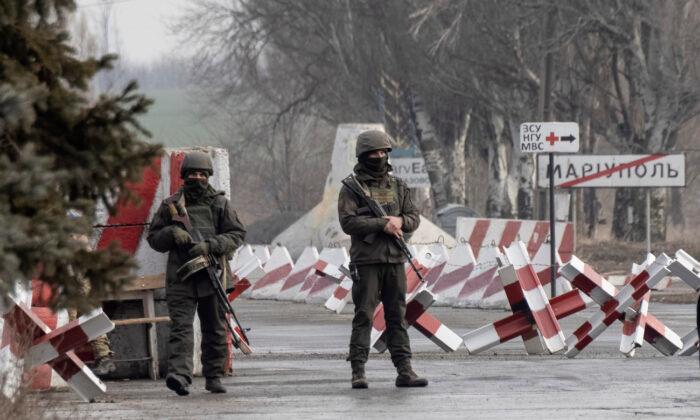Baltic nations Estonia, Latvia, and Lithuania are sending U.S.-made weapons to Ukraine to boost military support amid a threat of a Russian invasion.
It comes as Russia has sent an estimated 100,000 troops with tanks and other heavy weapons to its borders with Ukraine’s northeast, but denies it is planning an attack.
The defense ministers of the three nations in a statement confirmed they have received approval from the United States to send the weapons, which include Javelin anti-armor missiles from Estonia, and Stinger anti-aircraft missiles and adjacent equipment from Lithuana and Latvia.
“Estonia, Latvia, and Lithuania and their Allies are working together expeditiously to hand over the security assistance to Ukraine. We sincerely hope that Ukraine will face no need to use this equipment and call on Russian Federation to seize its aggressive and irresponsible behavior,” they added.


Under export control regulations, countries must obtain approval from the State Department before transferring any weapons they received from the United States to third parties.
A U.S. State Department spokesperson confirmed the approval to allow Estonia, Latvia, Lithuania, and Britain to provide U.S.-made equipment from their inventories to Ukraine, but gave no details on which weapons would be sent.
“The United States and its allies and partners are standing together to expedite security assistance to Ukraine. We are in close touch with our Ukrainian partners and our NATO Allies and are creatively utilizing all available security cooperation tools to help Ukraine bolster its defenses in the face of growing Russian aggression,” the spokesperson said.
Impending Invasion?
Russia’s recent amassing of troops and weapons near Ukraine’s borders is believed by the West to be preparation for a war to prevent Ukraine from joining the NATO Western security alliance.Russian officials recently demanded written guarantees that NATO will give up any military activity in Eastern Europe and Ukraine, but member countries have refused to make such promises.
Several NATO member countries have, in recent days and weeks, signaled support in defense of Ukraine. It comes as Russian troops began arriving in Belarus on Jan. 18 for military drills near the Ukraine border, scheduled for February.
The U.S. intelligence findings, which were declassified and shared with U.S. allies before being made public, estimate that a military invasion could begin between mid-January and mid-February.
The new U.S. intelligence was unveiled after a series of talks between Russia and the United States and its Western allies this week in Europe aimed at heading off the escalating crisis made little progress.
Kirby told reporters that the 12-day maritime exercise “Neptune Strike ‘22” will “demonstrate NATO’s ability to integrate the high-end maritime strike capabilities of an aircraft carrier strike group to support the deterrence and defense of the alliance.”
On Jan. 19, French President Emmanuel Macron announced a possible plan to deploy its troops to Romania as part of NATO operations. The following day, Romanian President Klaus Iohannis welcomed Macron’s announcement.
“I warmly welcome President Emmanuel Macron’s announcement on France’s readiness to participate in NATO’s forward military presence in Romania,” Iohannis wrote on Twitter. “The Romania-France strategic partnership will thus be reinforced on the Eastern flank, in the Black Sea region.”
Meanwhile, the United Kingdom has sent 2,000 anti-tank missile launchers in the airlifts to Ukraine, alongside 30 elite troops to provide training.
Spain announced on Jan. 20 it has sent warships to bolster NATO’s naval forces in the Mediterranean and the Black Sea. Spanish Defence Minister Margarita Robles said the government is also considering sending fighter jets to Bulgaria.
Canada on Jan. 21 offered Ukraine a $120 million dollar loan and was also considering to send over some arms to help Ukraine equip a new branch of its military.




